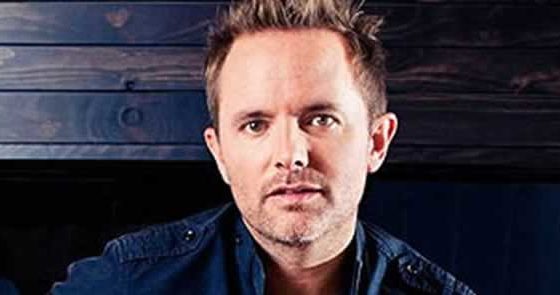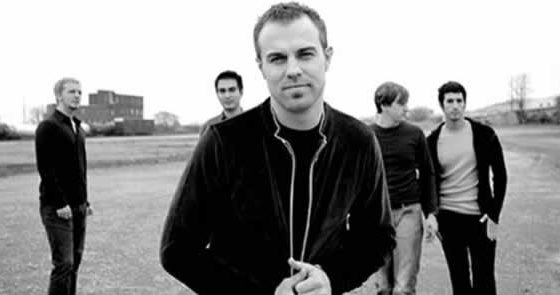The Investigation Begins Because science had played such an instrumental role in propelling me toward atheism, I also devoted a lot of time to posing questions about what the latest research says about God. With an open mind, I began asking:
Are science and faith doomed to always be at war? Was I right to think that a science-minded individual must necessarily eschew religious beliefs? Or is there a fundamentally different way to view the relationship between the spiritual and the scientific?
Does the latest scientific evidence tend to point toward or away from the existence of God?
Are those images of evolution that spurred me to atheism still valid in light of the most recent discoveries in science?
When I first began exploring these issues in the early 1980’s, I found that there was a sufficient amount of evidence to guide me to a confident conclusion. However, much has changed since then. Science is always pressing relentlessly forward, and a lot more data and discoveries have been poured into the reservoir of scientific knowledge during the past twenty years.
All of which has prompted me to ask a new question: does this deeper and richer pool of contemporary scientific research contradict or affirm the conclusions I reached so many years ago? Put another way, in which direction — toward Darwin or God — is the current arrow of science pointing now?
The Design Hypothesis When I opened my mind to the possibility of an explanation beyond naturalism, I found that the design hypothesis most clearly accounted for the evidence of science. The “explanatory power” of the design hypothesis outstripped every other theory.
The Evidence of Cosmology Thanks to scientific discoveries of the last fifty years, the ancient kalam cosmological argument has taken on a powerful and persuasive new force. As described by William Lane Craig, the argument is simple yet elegant: first, whatever begins to exist has a cause. Second, the universe had a beginning. Therefore, the universe has a cause. Even once-agnostic astronomer Robert Jastrow conceded the essential elements of Christianity and modern cosmology are the same: “the chain of events leading to man commenced suddenly and sharply, at a definite moment in time, in a flash of light and energy.”
The Evidence of Physics One of the most striking discoveries of modern science has been that the laws and constants of physics unexpectedly conspire in an extraordinary way to make the universe habitable for life. For instance, said physicist/philosopher Robin Collins, gravity is fine-tuned to one part in a hundred million billion, billion, billion, billion, billion.
The cosmological constant, which represents the energy density of space, is as precise as throwing a dart from space and hitting a bulls-eye just a trillionth of a trillionth of an inch in diameter on Earth. One expert said there are more than thirty physical or cosmological parameters that require precise calibration in order to produce a universe that can sustain life.
This evidence was so powerful that it was instrumental in Patrick Glynn [Harvard-educated academic and author of God, The Evidence] abandoning his atheism. “Today the concrete data point strongly in the direction of the God hypothesis,” he said. “It is the simplest and most obvious solution to the anthropic puzzle.”
The Evidence of Astronomy Similar to the fine-tuning of physics, Earth’s position in the universe and its intricately choreographed geological and chemical processes work together with exquisite efficiency to create a safe place for humans to live. Numerous factors make our solar system and our location in the universe just right for a habitable environment.
“If the universe had not been made with the most exacting precision we could never have come into existence,” said Harvard-educated astrophysicist John A. O’Keefe of NASA. “It is my view that these circumstances indicate the universe was created for man to live in.”
The Evidence of Biochemistry Complex microscopic contraptions, such as cilia and bacterial flagella, are extremely unlikely to have been built piece-by-piece through Darwinian processes, because they had to be fully present in order to function. Other examples include the incredible system of transporting proteins within cell and the intricate process of blood-clotting.
More than just a devastating challenge to Darwinism, these amazing biological systems — which far exceed the capacity of human technology — point toward a transcendent Creator. “My conclusion,” said Dr. Michael Behe, “can be summed up in a single word: design. I say that based on science. I believe that irreducibly complex systems are strong evidence of a purposeful, intentional design by an intelligent agent.”
The Evidence of Biological Information The six-feet of DNA coiled inside every one of our body’s one hundred trillion cells contains a four-letter chemical alphabet that spells out precise assembly instructions for all the proteins from which our bodies are made. Cambridge-educated Stephen Meyer demonstrated that no hypothesis has come close to explaining how information got into biological matter by naturalistic means.
On the contrary, he said that whenever we find a sequential arrangement that’s complex and corresponds to an independent pattern or function, this kind of information is always the product of intelligence.
“Information is the hallmark of mind,” said Meyer. “And purely from the evidence of genetics and biology, we can infer the existence of a mind that’s far greater than our own — a conscious, purposeful, rational, intelligent designer who’s amazingly creative.”
The Evidence of Consciousness Many scientists are concluding that the laws of chemistry and physics cannot explain our experience of consciousness. According to a researcher who showed that consciousness can continue after a person’s brain has stopped functioning, current scientific findings “would support the view that ?mind,’ ?consciousness,’ or the ?soul’ is a separate entity from the brain.”
Darwinist philosopher Michael Ruse conceded that “no one, certainly not the Darwinian as such, seems to have any answer” to the consciousness issue.
Nobel Prize-winning neurophysiologist John C. Eccles concluded from the evidence “that there is what we might call a supernatural origin of my unique self-conscious mind or my unique selfhood or soul.”
The Identity of the Designer But who or what is this master Designer? Like playing a game of connect-the-dots, each one of the six scientific disciplines I investigated contributed clues to unmasking the identity of the Creator…
Unlike Darwinism, where my faith would have to swim upstream against the strong current of evidence flowing the other way, putting my trust in the God of the bible was nothing less than the most rational and natural decision I could make. I was merely permitting the torrent of facts to carry me along to their most logical conclusion.
The Fusion of Science and Faith The facts of science and history, then, can only take us so far. At some point, the truth demands a response. When we decide not merely to ponder the abstract concept of a Designer but to embrace him as our own — to make him our “true God” — then we can meet him personally, relate to him daily and spend eternity with him as he promises.
Taken from CASE FOR A CREATOR, THE – HC by LEE P. STROBEL. Copyright © 2004 by Lee Strobel. Used by permission of The Zondervan Corporation
Visit caseforacreator.com


 Lee Strobel is a Christian apologetic author. He has written several books, including four which received ECPA Christian Book Awards (1994, 1999, 2001, 2005) and a series which addresses challenges to a Biblically inerrant view of Christianity. Strobel also hosted a television program called Faith Under Fire on PAX TV, and runs a video apologetics web site. Strobel has been interviewed on numerous national television programs, including ABC's 20/20, Fox News, and CNN.
Lee Strobel is a Christian apologetic author. He has written several books, including four which received ECPA Christian Book Awards (1994, 1999, 2001, 2005) and a series which addresses challenges to a Biblically inerrant view of Christianity. Strobel also hosted a television program called Faith Under Fire on PAX TV, and runs a video apologetics web site. Strobel has been interviewed on numerous national television programs, including ABC's 20/20, Fox News, and CNN.







